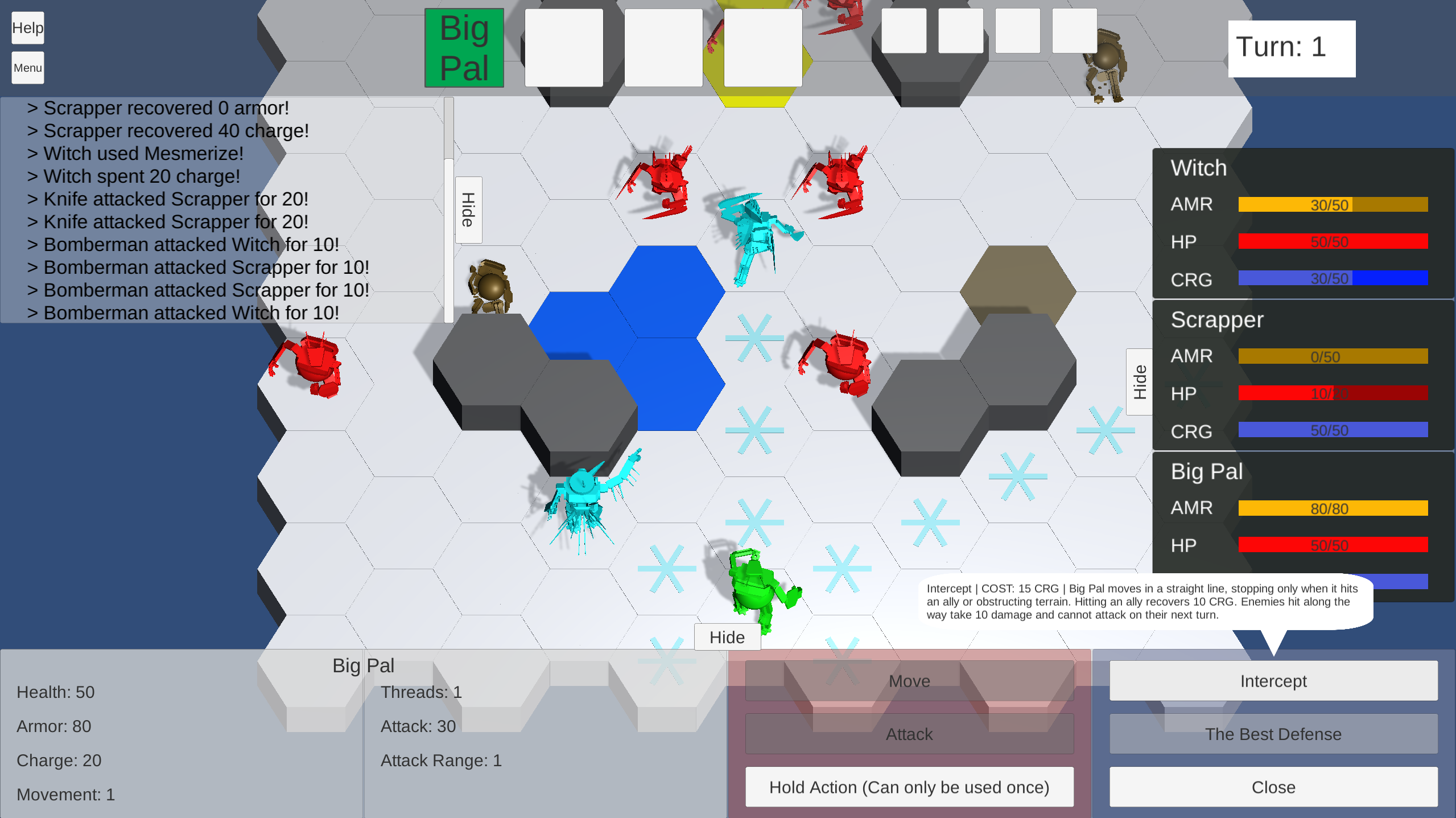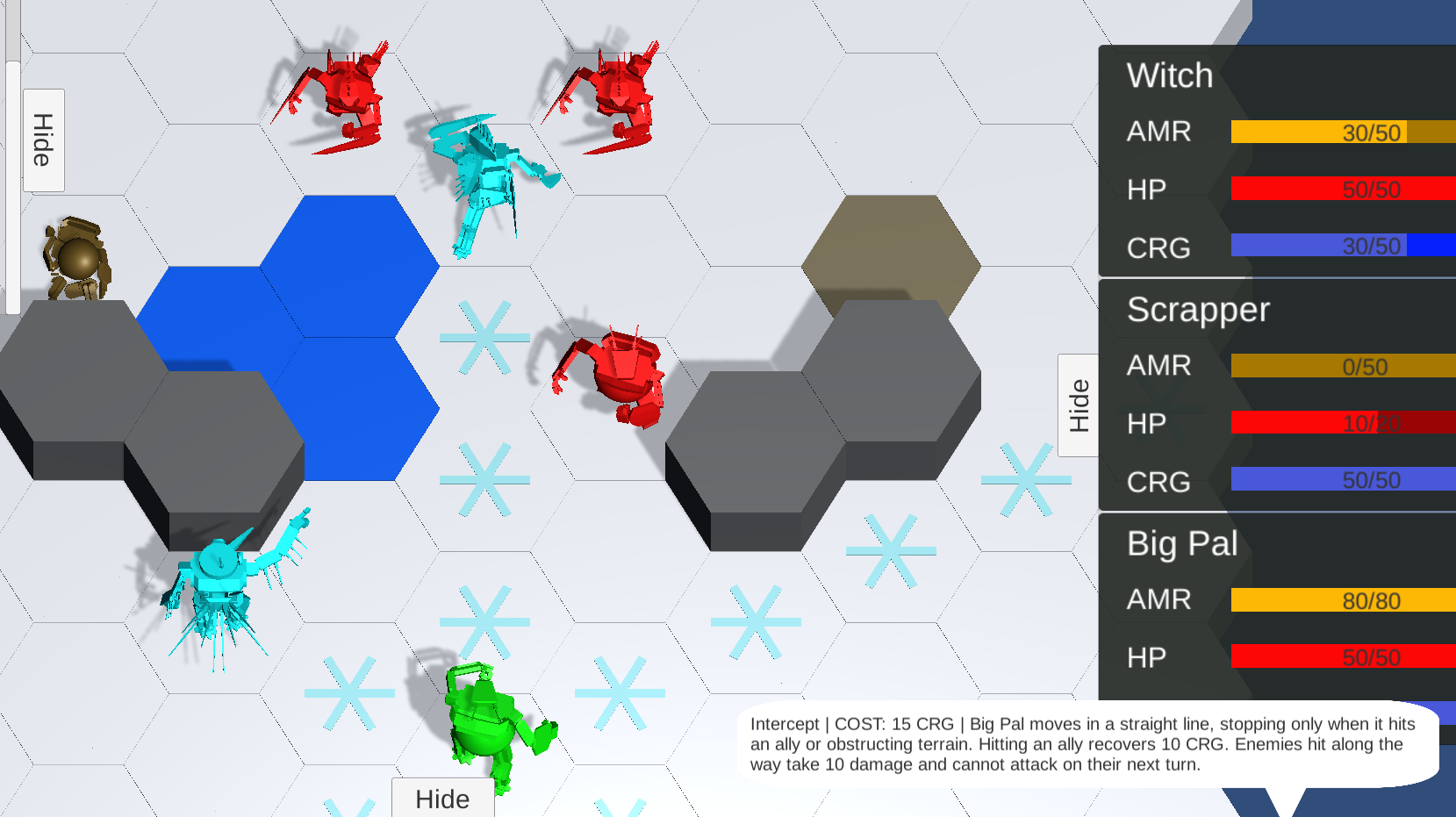
I was the primary systems designer on a team of 5 people, since we only had a week to produce this prototype the others focused on getting the Unity prototype up and running while my role was to design and then rapidly paper-prototype and iterate on the systems of the game before they were implemented. My job was also to prioritize which systems from my designs should be implemented and which could be cut with minimal damage to the game experience since our resources and time to get things up and running were so limited. I designed all the character classes and their abilities, all the enemy types and their behaviors, the different types of terrain, and the layout of the battle map used for the prototype. I was also responsible for creating the rough 3D models used for the characters and enemies in the prototype.
Scrapper Bots is a prototype of a hypothetical strategy RPG’s combat system made in one week. My goals were to design and iterate on a tactical hex-grid based combat system as quickly as possible in order to rapidly arrive at a design that was fun, flavorful, and presented the player with interesting and challenging tactical decisions to make. In the pursuit of that, the paper prototype version of this game went through 5 major versions in the course of the week to hone in on what parts of the system were interesting and worth keeping and what parts of the system either needed improvement or were superfluous and needed to be removed. The results were thrilling! The prototype is a rough sketch and somewhat lacking in player feedback, but once they got their heads around it players began giving each of their moves a lot of forethought and began trying to abuse each of their characters abilities, which was fantastic to see. The player character’s Meltdown abilities — which allow a player to sacrifice one of their units to utilize an extraordinarily powerful ability — proved extremely evocative and thought-provoking, players enjoyed experimenting with them and weighing the risk-reward of being down a unit for the power the ability provides. Additionally, the fact that the only reliable way for players to heal their units and recover their battery charge (which is spent on abilities) is to destroy and then harvest the scrap of enemy units means that players were rewarded for carefully choosing their targets and then using them to fuel more risky strategies. It also meant that even when a player was on their back foot and losing a battle, taking down one enemy frequently resulted in the player restoring one of their units to full health and charge, allowing them to hold out and even turn the tide of the battle. A lot of content was cut from the digital prototype: multi-character combination abilities, another player character class, several enemy types, but a lot of that cut content ended up benefiting the focus of the prototype. The final product is perhaps too rough to be mistaken for a finished game, but that was never the goal: it represents the starting point for a deeply engaging and entertaining combat system. I’m very proud of what we were able to do with so little time!
